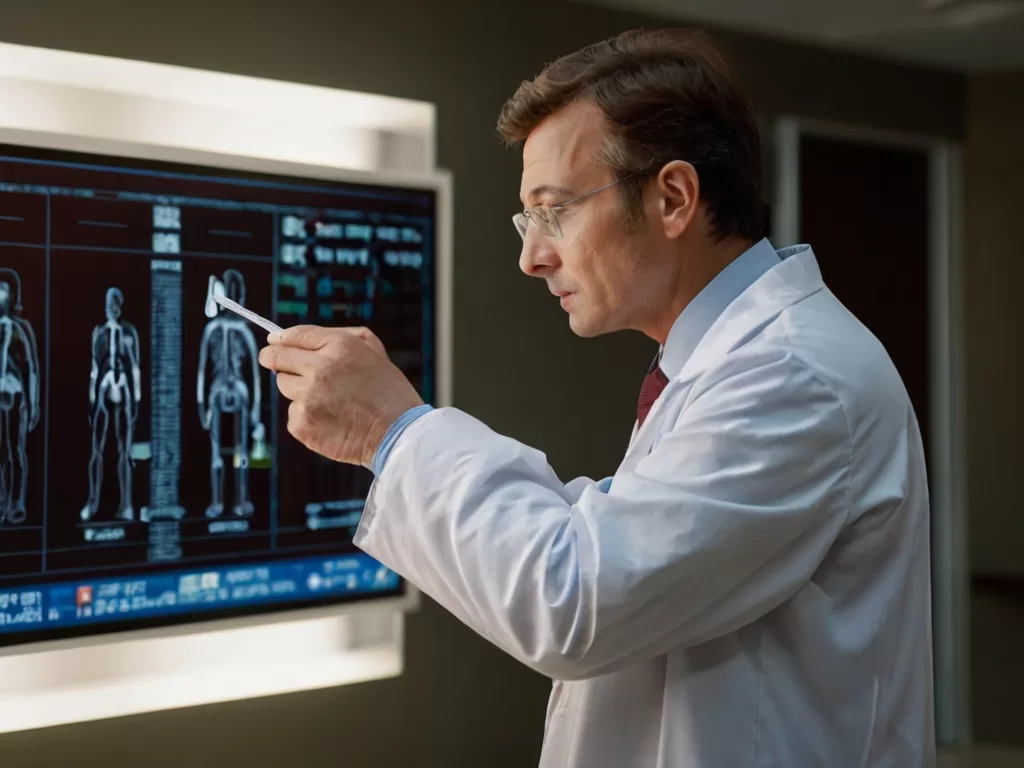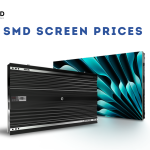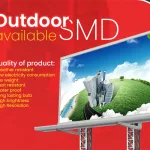SMD Screens in Medical Applications: Improving Healthcare Visualization
In the fast-paced world of healthcare, visualizing critical information efficiently and accurately is paramount to enhancing patient care and improving clinical outcomes. As technological advancements continue to revolutionize the medical industry, one innovation that stands out in facilitating precise data visualization is Surface-Mount Device (SMD) screens. In this article, we explore the transformational potential of SMD screens in medical applications, shedding light on their impact in improving healthcare visualization and ultimately empowering healthcare professionals to provide superior patient care. With a focus on informing and showcasing the professional significance of this cutting-edge technology, we delve into the myriad benefits SMD screens offer, highlighting their wide range of applications and underscoring the crucial role they play in revolutionizing the healthcare landscape.
Table of Contents
- Benefits of SMD Screens in Medical Imaging
- Enhancing Diagnostic Accuracy with SMD Screen Technology
- Optimizing Surgical Procedures through High-Resolution SMD Displays
- Recommendations for Implementing SMD Screens in Medical Environments
- Q&A
- Concluding Remarks
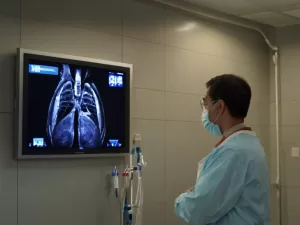
Benefits of SMD Screens in Medical Imaging
SMD screens, or surface-mount device screens, have revolutionized medical imaging in healthcare. These advanced screens offer numerous benefits that improve the visualization of medical applications, leading to better patient care and diagnosis.
One of the primary advantages of SMD screens in medical imaging is their exceptional image quality. These screens use high-resolution displays, providing healthcare professionals with clear and detailed visuals. The enhanced clarity allows for accurate interpretation of medical images, enabling physicians to detect and diagnose conditions with greater precision. Additionally, SMD screens offer excellent color accuracy, ensuring that healthcare providers can accurately assess the visual representation of anatomical structures and abnormalities. The vibrant colors and sharp images enhance diagnostic confidence, making SMD screens an invaluable tool in medical imaging.
Another significant advantage of SMD screens is their flexibility and adaptability. These screens can be easily integrated into various medical devices and systems, such as X-ray machines, CT scanners, and ultrasound devices. The compact size of SMD screens allows for space-saving designs without compromising on image quality. Moreover, SMD screens can be easily adjusted for optimal viewing angles, ensuring healthcare professionals have a comfortable and ergonomic experience when interpreting medical images. The versatility of SMD screens extends beyond their integration into medical devices, as they can also be utilized for telemedicine applications, enabling remote medical consultations and collaborations. With their versatility and adaptability, SMD screens are becoming an essential component in modern medical imaging technology.
Using HTML tables with WordPress styling, the following example illustrates the specifications comparison between SMD screens and traditional screens:
| SMD Screens | Traditional Screens | |
|---|---|---|
| Image quality | Exceptional | Standard |
| Color accuracy | Highly accurate | Varies |
| Integration | Easy integration into various medical devices | Limited compatibility |
| Adjustability | Optimal viewing angles | Fixed viewing angles |
In conclusion, SMD screens in medical applications are transformative tools that significantly improve healthcare visualization. With their exceptional image quality, excellent color accuracy, and flexibility, SMD screens empower healthcare professionals to provide accurate diagnoses and enhance patient care. As medical technology continues to advance, SMD screens are poised to play a crucial role in advancing medical imaging and revolutionizing healthcare as we know it.
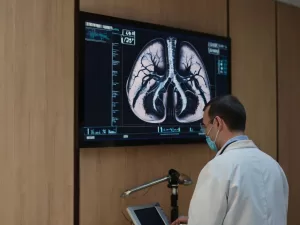
Enhancing Diagnostic Accuracy with SMD Screen Technology
Advancements in technology have become increasingly crucial in the field of healthcare, especially in medical imaging and visualization. One such breakthrough is the integration of SMD (surface-mount device) screen technology, which has proven to be a game-changer in enhancing diagnostic accuracy. SMD screens offer numerous benefits, including exceptional image quality, improved brightness, and unparalleled color accuracy. These features significantly contribute to more accurate and reliable diagnoses, ultimately leading to better patient outcomes.
One of the key advantages of SMD technology in medical applications is its ability to display highly detailed images. The pixel density of SMD screens ensures that even the smallest abnormalities or anomalies are visible, allowing healthcare professionals to make more precise assessments. Additionally, the high contrast ratio and wide color gamut enable the accurate visualization of subtle variations in tissue and organ structures, enhancing the ability to detect certain conditions at an early stage.
Benefits of SMD Screens in Medical Applications:
- Exceptional image quality
- Improved brightness levels
- Unparalleled color accuracy
- High pixel density for detailed imaging
- High contrast ratio for enhanced visualizations
- Wide color gamut for precise color representation
| Condition | Conventional Display | SMD Screen |
|---|---|---|
| Bone Fracture | May appear less defined | Clear visibility of fracture lines |
| Tumor Detection | May miss small tumors | Improved tumor visibility and accuracy |
| Vascular Imaging | Limited clarity in depicting blood vessels | Enhanced visualization of intricate vascular structures |
With the implementation of SMD screens in medical applications, healthcare professionals can benefit from higher confidence in their diagnoses, leading to more effective treatment plans. The advancement of SMD technology continues to push the boundaries of medical visualization, revolutionizing patient care and advancing the field of healthcare as a whole.
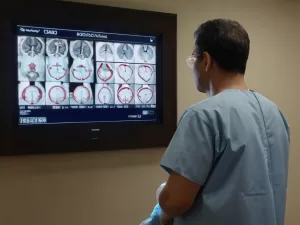
Optimizing Surgical Procedures through High-Resolution SMD Displays
One of the most important aspects in surgical procedures is the ability of medical professionals to accurately visualize critical information in real-time. This is where high-resolution SMD (Surface Mount Device) displays have revolutionized medical applications and improved healthcare visualization. These advanced screens offer incredibly detailed images, ensuring surgical teams have a clear and precise view of the patient’s anatomy and the procedure being performed.
By integrating SMD screens into surgical environments, healthcare facilities can benefit from a range of advantages. Firstly, the high resolution of these displays allows for better visibility of minute details, such as blood vessels, nerves, and tiny structures within the body. This level of clarity facilitates more precise and accurate procedures, reducing the risk of human error and improving patient outcomes. Moreover, SMD screens offer exceptional color accuracy, ensuring that medical professionals can easily differentiate between tissues and organs during complex surgical interventions.
This enhanced visual information allows for more effective decision-making and improved patient safety. Additionally, the slim and lightweight design of SMD displays enables easy integration into existing surgical equipment, minimizing disruption to workflow while enhancing the overall efficiency of the surgical team. Improved ergonomics also contribute to a more comfortable and seamless surgical experience. With these benefits, it is clear that high-resolution SMD displays are instrumental in optimizing surgical procedures and raising the standard of healthcare visualization in medical applications.
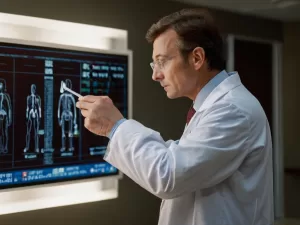
Recommendations for Implementing SMD Screens in Medical Environments
In today’s rapidly advancing world of healthcare technology, the implementation of SMD screens (Surface Mount Device screens) holds great potential for improving healthcare visualization in medical environments. These screens offer numerous benefits, such as enhanced image clarity, increased screen resolution, and improved color accuracy, all of which are crucial for accurate diagnosis and treatment. With their compact size and versatility, SMD screens can be seamlessly integrated into various medical applications, ranging from operating rooms and diagnostic imaging centers to patient monitoring systems and telemedicine setups.
To ensure successful implementation of SMD screens in medical environments, there are several key recommendations to consider:
- Quality and durability: When selecting SMD screens, prioritize quality and durability. Opt for displays that are specifically designed for medical use, featuring robust construction and advanced protective coatings to withstand frequent cleaning and sterilization procedures. This ensures longevity and minimizes the risk of damage or malfunction.
- Compliance with medical standards: Verify that the SMD screens you choose comply with relevant medical standards and regulations, such as FDA guidelines for medical device safety. This ensures that the screens meet strict quality control measures, adhere to electromagnetic compatibility requirements, and are suitable for use in sterile environments such as operating rooms.
In addition to these recommendations, consider consulting with healthcare professionals, IT experts, and manufacturers who specialize in SMD screens for medical applications. Their expertise can help tailor the implementation process to the specific needs of your healthcare facility, ultimately enhancing healthcare visualization and improving patient outcomes.
Q&A
Q: What are SMD screens in medical applications?
A: SMD screens, also known as surface-mount device screens, are high-resolution electronic displays commonly used in medical applications to enhance healthcare visualization.
Q: How do SMD screens improve healthcare visualization?
A: SMD screens offer exceptional image clarity, color accuracy, and high resolution, allowing healthcare professionals to visualize medical data with utmost precision. This technology helps in accurately diagnosing and treating patients.
Q: What are the key advantages of using SMD screens in medical applications?
A: SMD screens provide several advantages in medical settings, including improved accuracy in medical imaging, enhanced clarity of surgical procedures, better reading of patient records, and increased efficiency in telemedicine consultations.
Q: Can you explain the role of SMD screens in medical imaging?
A: SMD screens play a crucial role in medical imaging, such as X-rays, CT scans, and MRIs. The high-resolution displays enable radiologists and physicians to observe and analyze intricate details with great clarity, leading to accurate diagnoses and effective treatment planning.
Q: How do SMD screens enhance visualization during surgical procedures?
A: During surgical procedures, SMD screens enable surgeons to view live feeds from endoscopes, laparoscopes, or other surgical cameras. With exceptional color accuracy and clear image reproduction, surgeons can perform delicate procedures with precision, reducing the risk of errors.
Q: How do SMD screens improve reading of patient records?
A: SMD screens allow healthcare professionals to view digital patient records, including medical histories, test results, and charts, with great clarity and detail. This enhances the efficiency of medical practitioners in accessing and interpreting vital patient information.
Q: Can SMD screens facilitate telemedicine consultations?
A: Yes, SMD screens are instrumental in telemedicine consultations. By providing high-quality video conferencing capabilities and clear visuals, healthcare professionals can remotely examine patients in real-time and provide accurate diagnoses and treatment recommendations.
Q: Are SMD screens compatible with existing medical equipment and systems?
A: Yes, SMD screens are designed to integrate seamlessly with existing medical equipment and systems. They can be easily connected to imaging devices, surgical cameras, electronic medical records (EMR) systems, and telemedicine platforms.
Q: What considerations are important when selecting SMD screens for medical applications?
A: When selecting SMD screens for medical use, factors such as resolution, color accuracy, screen size, connectivity options, and compliance with relevant medical standards should be taken into account. It is best to consult with reputable suppliers who specialize in healthcare visualization solutions.
Q: In summary, how do SMD screens contribute to improving healthcare visualization?
A: SMD screens enhance healthcare visualization by providing exceptional image quality, clarity, and color accuracy. From medical imaging and surgical procedures to reading patient records and facilitating telemedicine consultations, SMD screens assist healthcare professionals in delivering accurate diagnoses and effective treatments, ultimately improving patient care and outcomes.
Concluding Remarks
In conclusion, the integration of SMD screens in medical applications has revolutionized healthcare visualization, paving the way for enhanced diagnostic accuracy and improved patient outcomes. The introduction of these advanced display technologies has allowed medical professionals to visualize complex data sets with unparalleled clarity, making it easier to identify and analyze critical information.
From surgical planning and simulation to real-time monitoring and telemedicine, SMD screens have unlocked new avenues for precision and efficiency in medical practice. Their high resolution, vibrant colors, and wide viewing angles ensure that physicians, surgeons, and healthcare providers can observe minute details with utmost precision, ultimately leading to more accurate diagnoses and targeted treatments.
Furthermore, the compact and lightweight nature of SMD screens makes them ideal for medical devices and equipment integration, providing a seamless and user-friendly experience for healthcare professionals. These screens can be easily integrated into portable ultrasound machines, endoscopes, and medical tablets, allowing for real-time visual assistance during procedures, minimizing risks, and increasing procedural success rates.
It’s worth noting how SMD screens have also improved patient engagement and education. By presenting medical data and interactive educational materials in a visually appealing and easily comprehensible way, healthcare practitioners can now effectively communicate complex medical information to patients and their families. This has led to greater patient empowerment and involvement in their own healthcare decisions, ultimately fostering better medical outcomes and patient satisfaction.
Although SMD screens have already made significant contributions to healthcare visualization, the continuous advancements in this technology hold even greater promise for the future. With ongoing developments such as higher resolutions, increased durability, and embedded artificial intelligence, SMD screens will continue to push the boundaries of medical imaging and visualization, opening doors to unprecedented possibilities in the field of healthcare.
In summary, SMD screens have transformed the landscape of medical visualization, offering remarkable advancements in accuracy, efficiency, and patient engagement. As these innovative technologies continue to evolve, they will undoubtedly play a pivotal role in shaping the future of healthcare, further improving diagnostic capabilities, optimizing treatment plans, and revolutionizing patient care.
SMD Screens in Medical Applications: Improving Healthcare Visualization
Contact Us For Free Consultation at 0306-1333384
Powered By BIACommunication


